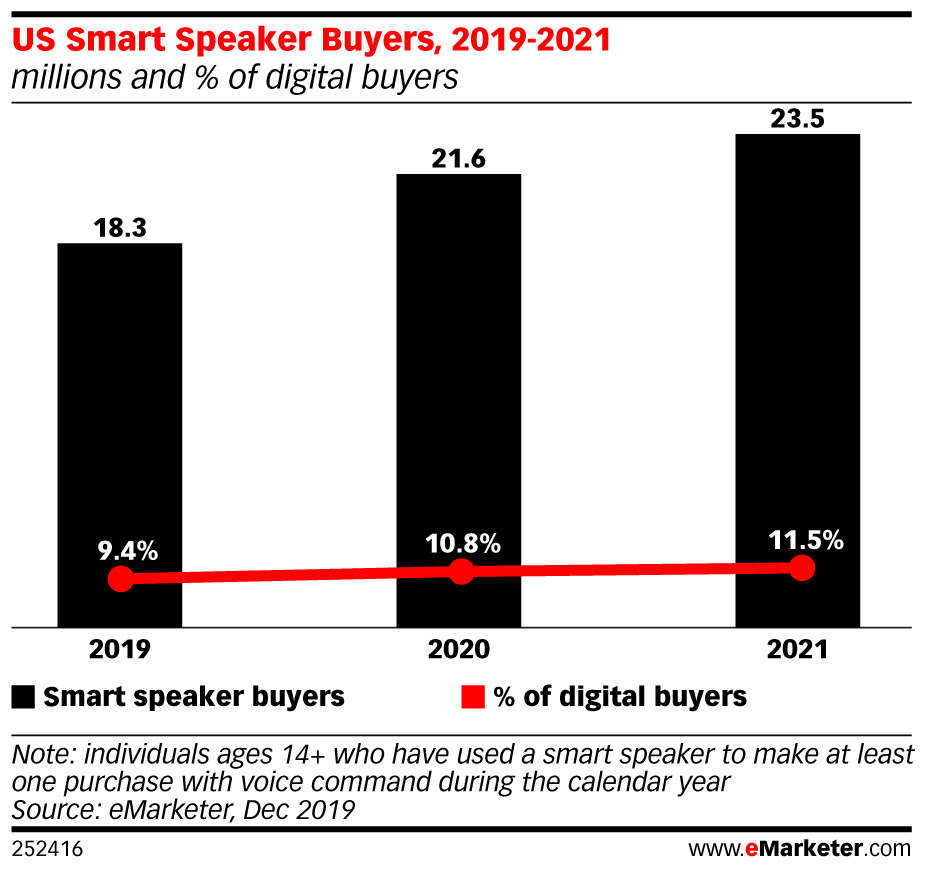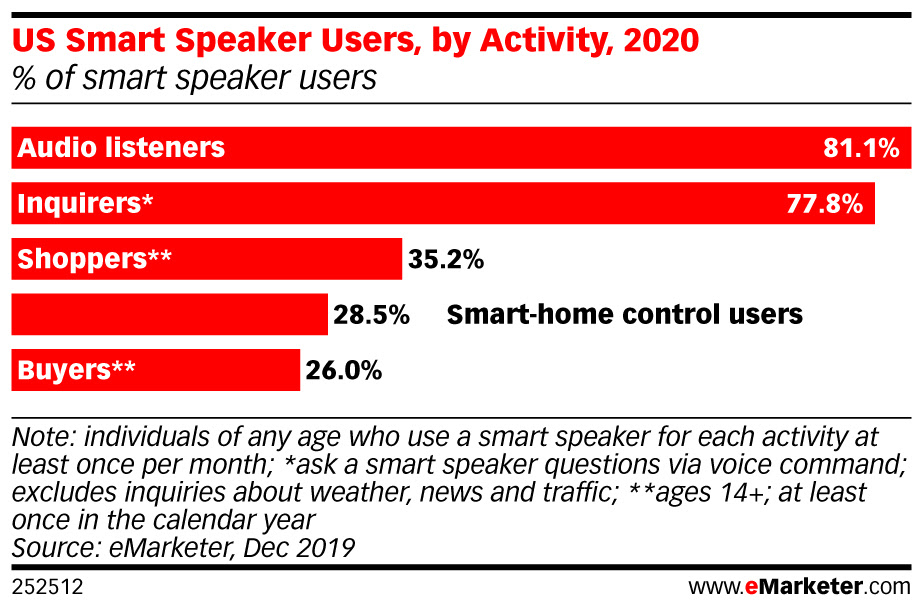• eMarketer lowers US forecast amid security concerns and competition from smartphones
While some US consumers are warming to the idea of making voice-based purchases via smart speakers, the number of those doing so is smaller than initially estimated. In our latest forecast on smart speaker users, we lowered our outlook for the number of smart speaker buyers (people making a purchase via a smart speaker) as well as the number of smart speaker users (people who use smart speakers for any purpose).
By the end of 2020, we expect that 21.6 million people will have made a purchase using a smart speaker. This is lower than our Q2 2019 forecast, in which we expected the number to reach 23.6 million. Still, the activity is growing and will pass a milestone this year when 10.8% of all digital buyers in the US will make a purchase using a smart speaker.

A key reason for the revised forecast is that device-makers haven’t fully gained users’ trust. Potential buyers are still concerned about it comes to secure payments and privacy. The absence of screens on many smart speaker models is an added aspect of this problem – people often want to see products before a purchase. As a result, some voice buyers are instead opting to make purchases with other voice-controlled devices that have screens, such as smartphones and tablets.
“There’s a good deal of friction in the voice-based buying process because people can’t see what they’ll actually be purchasing unless they have a screen on their smart speaker,” eMarketer principal analyst Victoria Petrock said. “So, most of the purchases made today are reorders and things that don’t need to be inspected.”
The downward revision in the number of smart speaker buyers is also due in part to readjusted estimates for the types of activities users conduct on the devices. In our Q2 2019 forecast, we expected 27.9% of smart speaker users to make purchases with their device in 2020. We have now lowered this percentage to 26.0%.
In contrast, we made an upward revision to the percentage of smart speaker users listening to audio (81.1%) and making inquiries (77.8%). This shows that users are going back to the basics, using their devices for simple and straightforward tasks. (Please note that our “inquiries” number does not include inquiries about the weather, news or traffic.)

“Though there are thousands of smart speaker apps that do everything from let you order takeout to find recipes or play games, many consumers don’t realize that they need to take extra and more specific steps to utilize all capabilities,” Petrock said. “Instead, they stick with direct commands to play music, ask about the weather or ask questions, because those are basic to the device.”
Overall, smart speaker usage is not performing as expected. In our Q2 2019 forecast, we predicted the number of US smart speaker users to reach 84.5 million. We have now revised our 2020 estimate down to 83.1 million—representing one-quarter of the population.

























